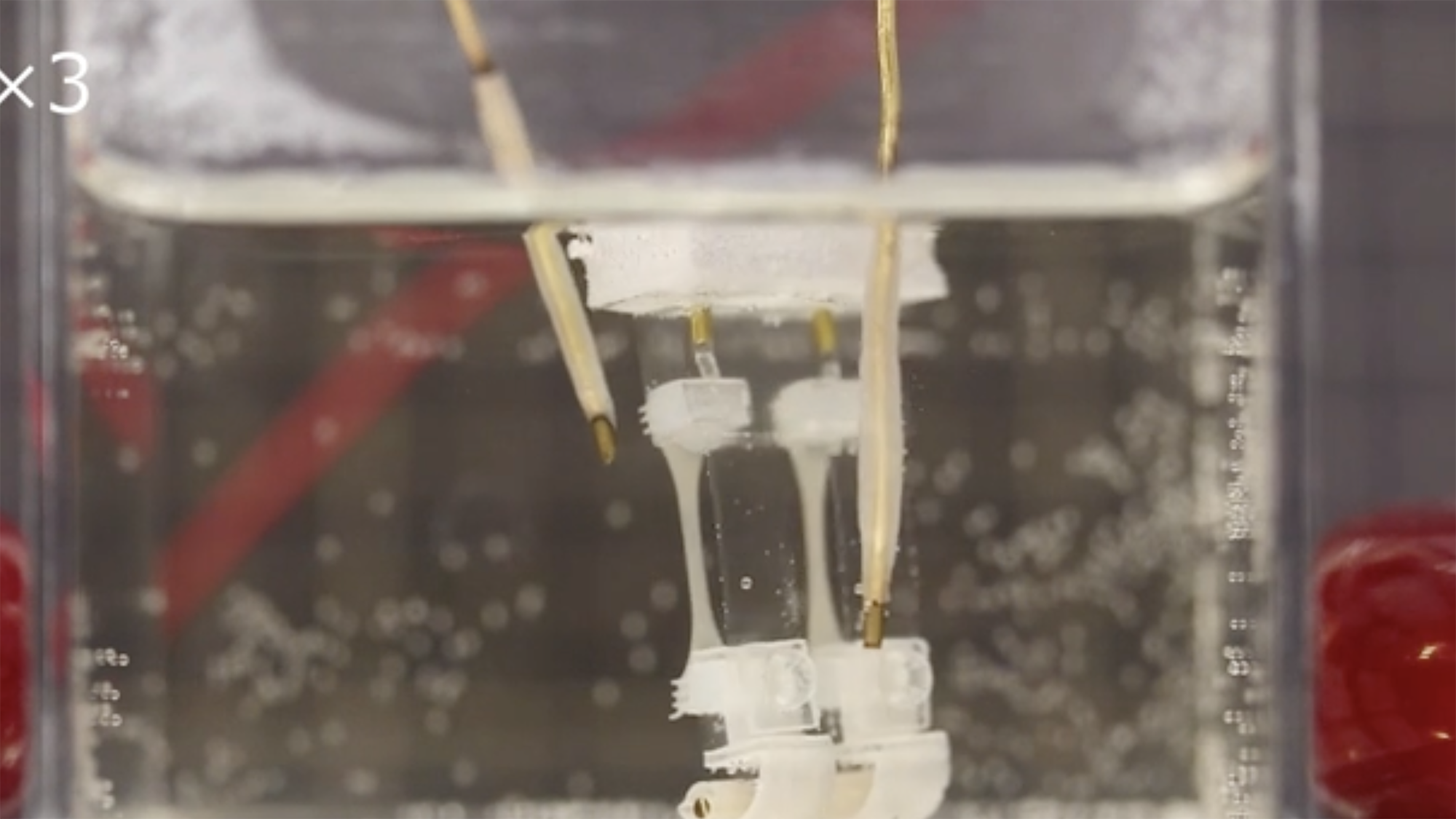

As impressive as many biohybrid robotic projects are, they aren’t exactly known for their hairpin turns. In fact, it’s still pretty difficult to design an agile machine merging artificial materials and biological tissue. But if a future generation of biohybrids does manage to one day clear that hurdle, they could owe it to a tiny pair of cute, albeit pretty much useless, robo-legs.

Researchers at the University of Tokyo detailed their 3cm tall creation in a new study published today in Matter. By combining 3D-printed parts, rubber, and lab-cultivated rat muscle tissue cells, the team managed to create a proof-of-concept minibot capable of turning on a 90-degree pivot while suspended in water. To make it work, one “leg” receives minute electrical pulses that in turn contract its rat muscle actuators, while the other serves as its fixed point of support. In doing so, the biohybrid prototype manages to pivot at an angle previously unobtainable by similar robotic designs.
[Related: Meet xenobots, tiny machines made out of living parts.]
It’s a pretty big deal… although an incredibly slow one. According to researchers, their robot moves at an incremental 5.4mm per minute thanks to electrical stimulations issued through the water at five second intervals. But before you think this is being a bit harsh on the little guy, take it from team member Shoji Takeuchi:
“This is still basic research. We are not at the stage where this robot itself can be used anywhere,” he stipulated while speaking to New Scientist.
As it stands (so to speak), the biohybrid can’t even remain upright underwater without a buoy support system. It also needs constant supervision, and a watery conduit to stimulate the muscle actuators. Takeuchi says getting it onto dry land would require much thicker muscle designs, additional joints, and some kind of nutrient system to keep the tissue cultures alive and kicking.
Writing in their paper, researchers believe their advancements potentially could “contribute to a deeper understanding of biological locomotion mechanisms,” as well as possibly “pave the way further mimicking the intricacies of the human gait mechanism” in biohybrid robots.
After a few more years pumping weights at the gym on dry land (i.e. advancements in the lab), more complex robot iterations could possibly find their way back into water as deep-sea explorers. Science also notes biohybrid designs may also eventually be deployed in search-and-rescue missions. It may sound somewhat spooky to find yourself saved by a biorobot built from rat muscles—but it’s either that or the spider bots.
